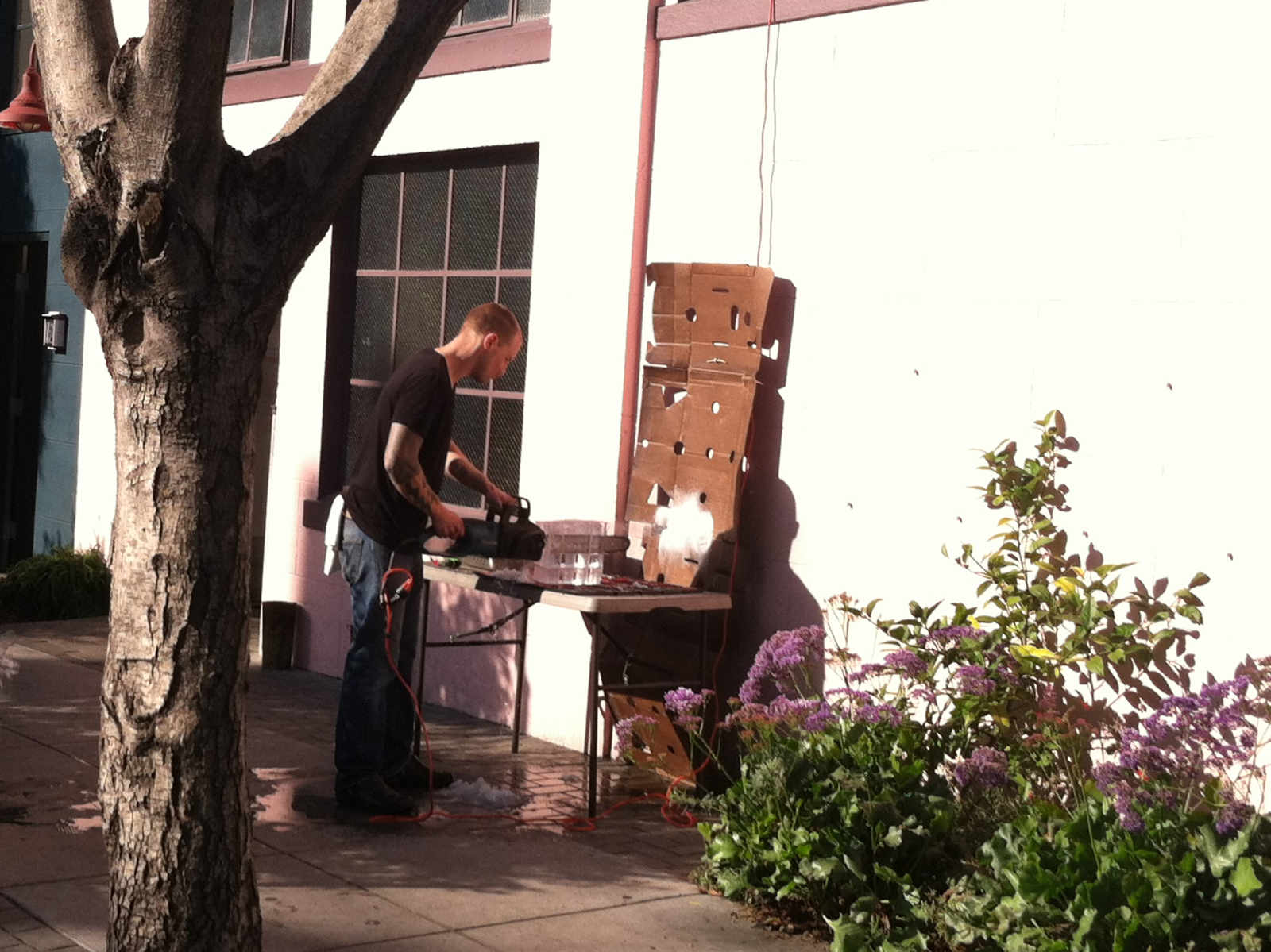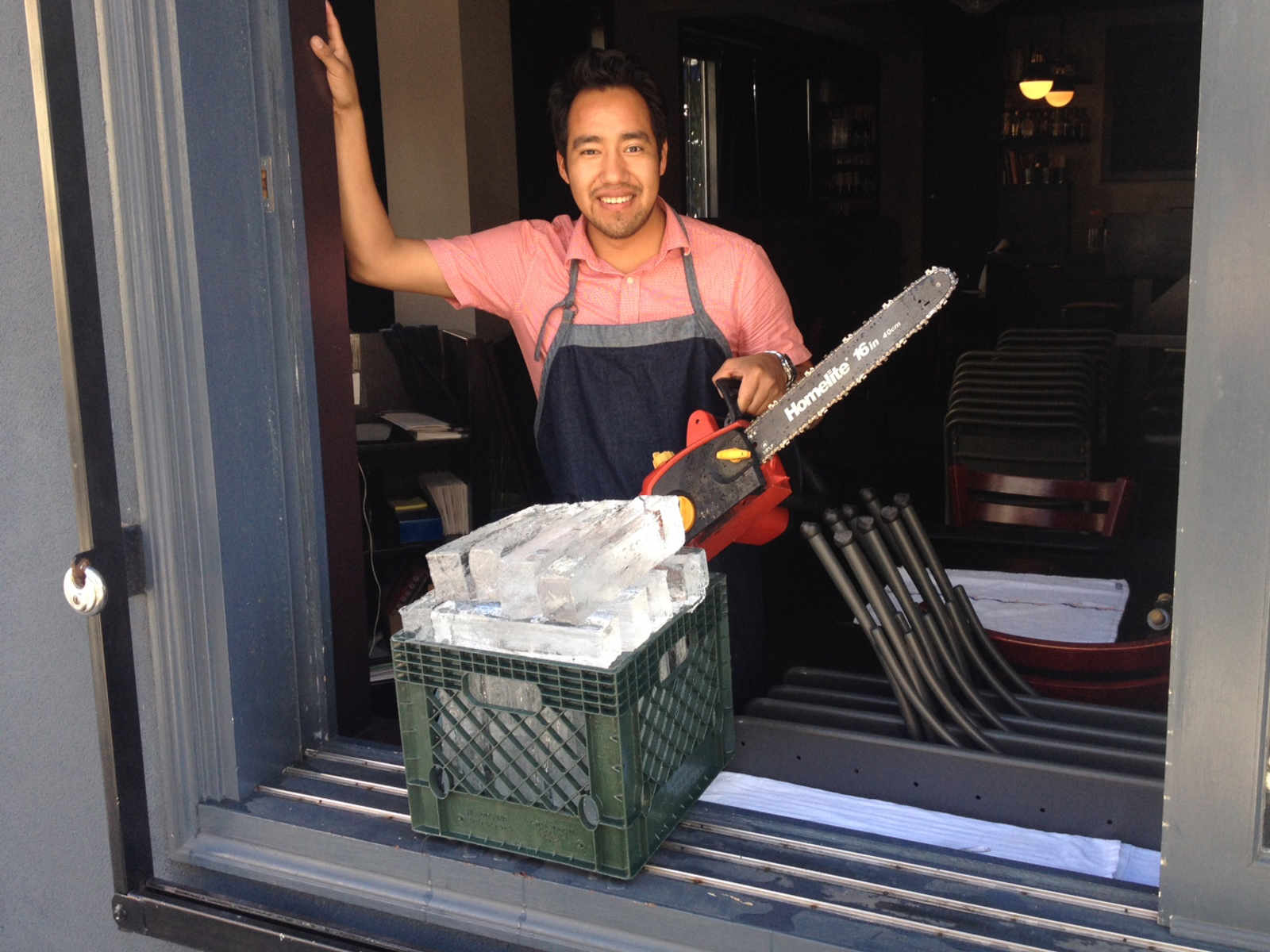San Francisco's Cocktail Affectations Are Killing the Planet
— By Jack Morse (@jmorse_) |

Anyone who has visited one of San Francisco’s ubiquitous artisanal cocktail bars has surely noticed a single unifying theme: fancy ice cubes. These cubes, often large, crystal clear, hand-hewn, and geometrically assured of their edginess, have in many ways become a short hand for an affected hipness so often prevalant in bars riding the latest fenugreek trend.
Delivered in huge blocks, and frequently broken down by chainsaw on the sidewalk, these over-sized cubes seem on the surface to suggest that a drinking establishment takes its shit seriously. Like, hey dawg, don’t worry, we got your fancy-ass ice needs covered. But here’s the problem—it turns out that this trend is awful for the environment.
Last month Mother Jones looked into how these large, clear blocks of ice are actually made, and what they found is not encouraging [emphasis added]:
According to Pete Palm, vice president of sales at Western Pacific Distributors—one of California’s major food service equipment wholesalers—a Clinebell [the special machine used to make large ice blocks] has to run for more than three days to make the amount of ice a regular restaurant ice machine could produce in one day. “If I do some quick calculations on the lbs of ice and the [horsepower] rating I come to the conclusion that it does not meet what would be considered an energy star unit,” Palm wrote in an email to Mother Jones. (Energy Star is an EPA standard for energy-efficient consumer products; most commercial ice makers are Energy Star-certified.)
Artisanal ice makers also have to deliver their product to their customers, which means packing it in dry ice and carting it around in a van. And their high standards for the shape of their blocks can exacerbate the inefficiency. If [artisanal ice maker Charles Hartz] finds a block with a chip or a crack, he says, he won’t use it. “I’m kind of particular,” he admits.
And so in catering to the tastes of those who feel an “enormous hand-hewn ice cube” is what makes or breaks a cocktail, the latest batch of painfully hip watering holes is displaying an active disregard for the environment.
At least it’s disregard served with a smile.
